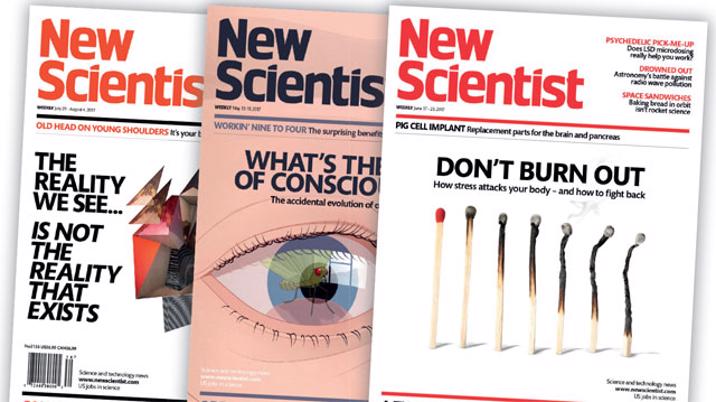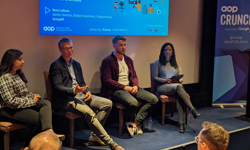
Chloe Thompson, recently voted PPA Digital Marketer of the Year for her work as audience development marketing manager at New Scientist, works at the bleeding edge of publisher marketing. But despite her chosen discipline’s prevailing culture of learning by doing with no established blueprint to follow, the marketer – who left university just five years ago – says she wouldn’t have it any other way.
Thompson moved to the New Scientist three years ago from the events company she joined after graduating with a BA in Marketing Management from Northumbria University. It was while working in events that she became interested in content marketing, and it was with the encouragement of her partner, a New Scientist reader, that she moved into publishing – initially as marketing executive at the title, before taking on her current role in April 2017.
“Digital marketing is constantly evolving and what benefits me, I think, is that I'm happy to give anything a go – even if I don’t understand it 100 per cent at first, which is just as well as you can never really ‘know’ a platform or particular software as things are changing rapidly and all the time,” she explains.
“We are a small operation with a small marketing budget and a small team of marketing staff with editorial content that covers topics of widespread, general interest with a global readership. Yet we also find ourselves up against big players – like national newspapers or The Economist, with large budgets and large teams – and a lot of free content out there.”
Thompson continues: “So the constant challenge is to convince people our content is worth paying for and, wherever possible, to persuade them to subscribe.”
Audience development marketing is a data-heavy discipline which, at New Scientist, ranges from tracking daily and weekly audience behaviour – to optimise topical digital content taken from each edition in a way that boosts content consumption across different platforms, according to when and where it is most needed - to driving readers to subscribe, and running digital campaigns to grow the audience.
The magazine was launched back in 1956, but the New Scientist brand now comprises print, digital and events - which include its annual festival of ideas and discovery, New Scientist Live, which will soon be in its third year.
New Scientist positions itself as ‘everything you need to know about science and technology – and why it matters’, but unlike specialist titles, is intended not just for an expert audience but anyone with an interest. It regularly covers a wide array of topics, from climate change to psychology and health as well as subjects more closely related to maths and physics.
With a weekly combined global print and digital circulation of almost 125,000, it has around 90,000 subscriptions (split across print-only, digital-only and print and digital combined) plus 20,000 to 25,000 newsstand sales each week.
Emphasis on digital marketing
Though New Scientist runs some in-house advertising, it only occasionally buys ads in third party media and following a recent decision to axe its subscription inserts, the bulk of its audience marketing is now digital with an emphasis on the website, pay per click, email marketing for a direct sell and, for a softer sell: social media.
“I'm involved across all digital channels across content and sales campaigns,” Thompson continues. And her PPA win came about as a result of a number of important recent digital marketing initiatives.
These included creating and developing Pi Day – a closely-integrated one-day flash sale when three issues of New Scientist were offered for £3.14. The promotion, which was inspired by Pi (the ratio of a circle’s circumference to its diameter), took place on March 14 - 3.14.17, as 3.14 is the value of Pi. It generated 570 new subscriptions within 24 hours and will be evolved in 2018, its second year.
Then there was a successful campaign which involved re-purposing weekly covers alongside witty one-line calls to subscription action on Facebook.
One execution carried the Trump-themed message: ‘Fake news? Not in our world’, for example. Thompson’s on-going regular analytics work, meanwhile, includes her close involvement in the recent introduction and integration of new software to track audience behaviour which allows the team to target marketing content to specific recipients with unprecedented accuracy.
“We have an overall annual target we work to but also a specific target for all of the different channels we use according to how each functions and performs,” she says. And it was this approach that recently led the team to stop doing magazine subscription inserts as digital marketing activity was more cost efficient and effective.
“Our goal is to encourage people to take out subscriptions through the website, although we are also careful to ensure we don’t alienate those of our readers who prefer to buy at the newsstand as and when they fancy.”
Growth potential
Earlier this year, New Scientist was bought from its previous owner, Reed Business Information, by Kingston Acquisitions – the investment vehicle run by the team that acquired the Times Educational Supplement from News International and turned it into a global teaching brand with the bulk of its revenues coming from digital.
At the time of the purchase, Kingston’s lead Sir Bernard Gray highlighted New Scientist’s “huge growth opportunity” thanks to the growing role played by science and technology in people’s daily lives and the need to understand and keep pace with its accelerating rate of change.
Though still early days, Thompson says the focus in intervening months has been on re-examining every aspect of what she and her team do, including price testing. This has included building on a detailed audience analysis and segmentation project led by former marketing director Ben Cordle who left New Scientist in early 2017.
Work is now underway to develop a new strategy to carry the brand forward that will include expanding its audience – which is currently predominantly aged 40 to 50-something with a 60:40 male:female split – and grow readership amongst other groups, especially younger readers.
In the brand’s favour is the deep levels of engagement and respect New Scientist readers have for it. While some of its readership can be classified as ‘expert’ loyalists, a rapidly growing number are generalists with a passion for science. But a challenge for building a new audience is – and will continue to be – persuading people “science isn’t scary” but relevant to pretty much every and any aspect of everyday life, Thompson readily admits.
Accuracy, immediacy and reliability are key marketing messages – and the antidote to fakery, and social media is a powerful platform through which Thompson says New Scientist will continue to engage with and recruit non-readers to the New Scientist brand. Another powerful tool is third party partnerships, however – New Scientist currently has a weekly branded double page spread in The Metro, for example – and the New Scientist Live festival, which further brings the brand to life.
Thompson expects a new strategy for the New Scientist brand’s marketing to be finalised in coming months along with some new appointments to the marketing team, but over and beyond that, she remains open-minded about both the opportunities that lie ahead – and also the challenges.
“My immediate priority is knowing what’s performing now, learning from it, doing it better, then moving it forward to do it even better next time,” she insists. “The market we are in is so fast-moving, there is simply no time to stand still. What’s also important is to be strong enough to tolerate mistakes, because mistakes are an important way to learn and understand how best to improve.”
And she applies the same rationale to her own career.
“Coming out of university five years ago, I never expected to have the job I have now, so I never had any particular set of targets or ambitions – and I can’t say that’s changed much for me now,” she observes.
“What drives me is doing a good job, optimising the campaigns I work on and moving forward. I'm not really one for putting labels on where next or what in five years’ time I want to be. I could do anything, I think – it will depend on how I might feel further down the line. For now, though, what I want is to be open – especially to the new opportunities that technologies which we may not yet have even heard of, may well soon bring.”












